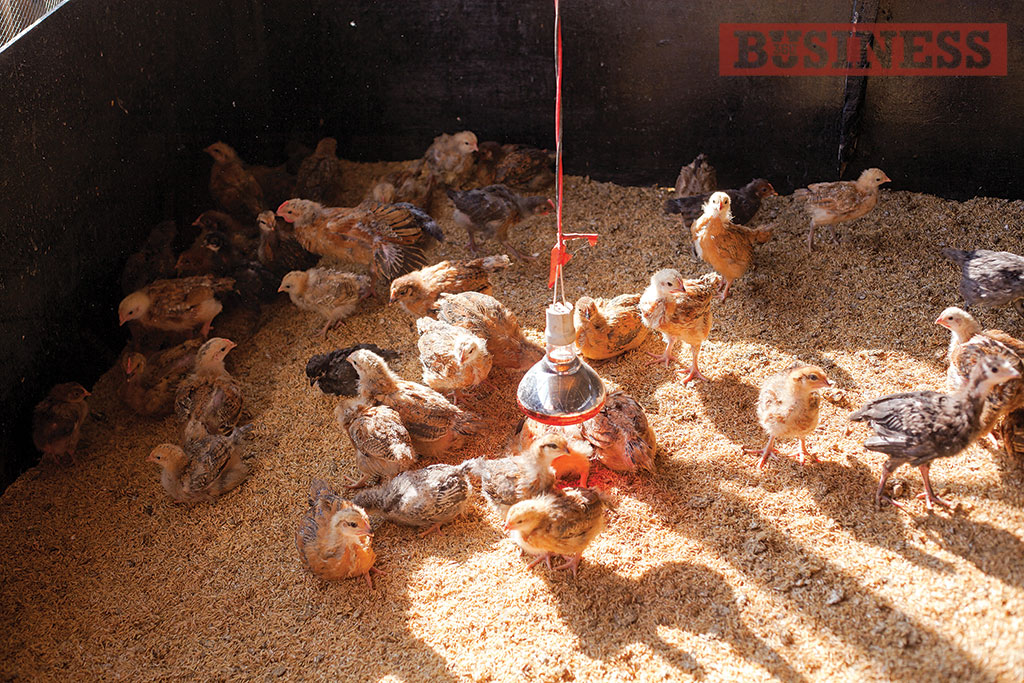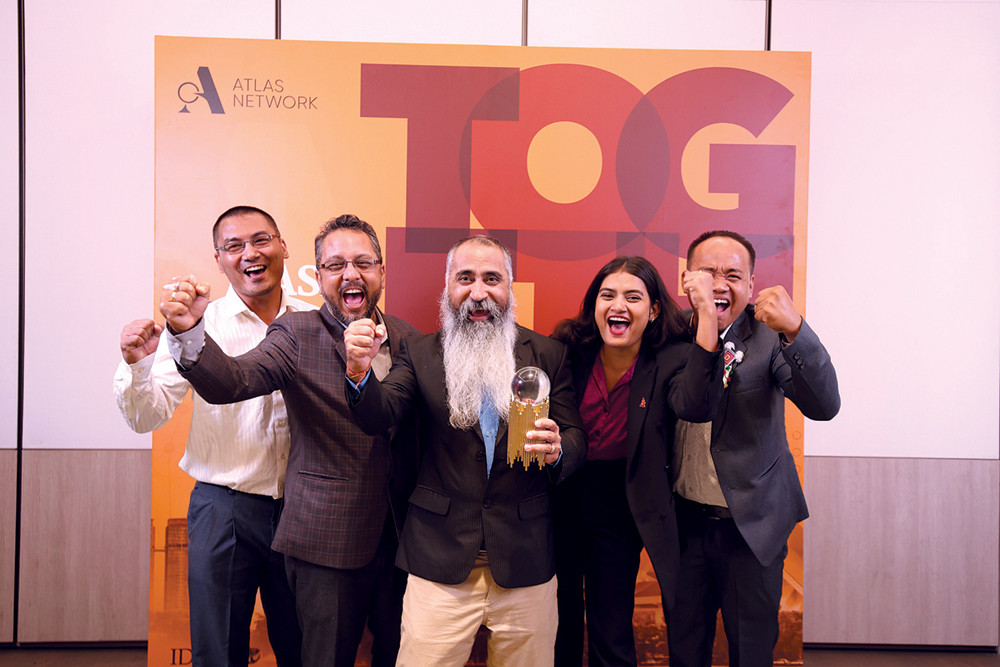
By Ankita Jain
Where many organisations design, plan and implement new policies and strategies, Nyaya Health Nepal is working towards improving the existing public healthcare system that sustains in the country. Also known as Possible Health, Nyaya Health Nepal is a nonprofit healthcare organisation established in 2009 which acts as an implementing partner of the Ministry of Health. “As part of our partnership with Ministry of Health under the concept of public-private partnership, we manage public sector health care,” shares SP Kalaundee, Executive Director, Nyaya Health Nepal.
With an aim to work in the healthcare sector, Kalaundee left his full time teaching opportunity in one of the universities in the US and returned home. “I do not come from a healthcare background; therefore, associating with Nyaya was an opportunity. In fact, I had lost my father and the reason behind his death was not known. Since then I was eager to work in this field,” reveals Kalaundee who has been working with the organisation for four and a half years now.
[su_pullquote align="right"]"From the beginning of our involvement in the management of healthcare, we clarified that everyone will have access to healthcare irrespective of economic status. And therefore, we decided to provide healthcare without any charges. Till today we haven’t charged even a penny for the services in both the districts"[/su_pullquote]
Nyaya Health Nepal currently works in two districts, Achham and Dolakha as part of a long term partnership with the Ministry of Health. The partnership is such that the Ministry of Health is the owner, regulatory and co-financier while Nyaya Health Nepal is an implementing partner bearing the responsibility of overall management. It includes human resource management, financing management, care and improving the overall quality. They also co-finance raising funds from outside. “The mission of our organisation is to improve healthcare for under-served communities. We started in Achham considering the fact that access to healthcare was really difficult there as it is one of the least developed districts. We have been working in Achham since our inception; whereas we started working in Dolakha post-earthquake,” he states.
The salient feature of this organisation is that they have not only focused on improving the internal management and system but also introduced innovative ideas to improve healthcare in the country. “We have introduced the digital system. Hence, our data recording and reporting are fully digitalised in the hospitals. The other major innovative aspect is the community health programme,” he reveals. The digital system comprises Electronic Health Record (HER), patient tracker, pharmacy record and more. The organisation has made everything digitalized. The system is automated which saves time, information and helps in improving the quality of care in the hospitals while the community health programme helps to connect care from hospital to the homes. “We have a cadre of health workers whom we have recruited, trained and have been deployed to cover the major areas in the two districts,” he adds.
The community health programme addresses one big loophole in the health sector. Kalaunee rightly points out that if you come to the hospital, you get care but if you are not able to visit the hospital, you cannot access care. Further, our health information management system does not have data of the patients who aren’t able to visit hospitals or of the patients before and after their discharge from hospital. To fill this huge gap and conduct active surveillance, Nyaya Health Nepal designed the community health workers team. They support the mothers from early pregnancy detection to the post-delivery; they are also involved in chronic disease follow-up care. This way they are ensuring that no one is left behind.
One community healthcare worker covers the area of 2000 people and every three months the health worker needs to reach each household. If there is any patient in the house, the health worker would visit every month. For instance, as soon as a pregnant lady is detected, the community health worker from that place would be notified and s/he would start the follow-up. “These things are measured, mapped, tracked and reported so that our health system is able to analyse. We have developed this mechanism as we have a commitment, as a country, of universal health coverage, making sure that no one is left behind. We are trying to make it sure through the network of community health workers and improve healthcare at the hospital,” he adds.
These implementations had a very encouraging result in both the districts. They were able to improve the institutional birth rate, achieve the under two mortality rate and more. “The first municipality that we rolled in, we have now the institutional birth rate of 96% while our country’s sustainable development goal is to achieve 90% by 2030,” he says. The organisation also receives support from a US-based entity and they have partners primarily in the US and also other parts of the world. “We think this is a positive aspect of the organisation that we have been able to receive not only financial support but also innovative ideas and global best practices through our partners.”
Primarily a care delivery organisation, their expertise and strength lies in implementing, managing and improving healthcare. But post-earthquake they were also engaged in relief work assigned by the government. At the time of such disasters, developing countries can become an easy dumping site; therefore, they tried their best to protect against it. “We practically reached out to partners and requested to support us based on the country’s need rather than providing any medicine they fancied,” he explains.
Further, at that period of time, there were hundreds of health facilities which got damaged. Although they aren’t an organisation with construction strength but understanding the need of the country, Nyaya was assigned by the government to rebuild around 21 healthcare centres in Dolakha district out of which 18 have been completed so far. “When we visited Dolakha, we came to know that based on per capita loss, this district was the highest hit,” he shares.
According to Nyaya Health Nepal’s data, 27% of households spend more than 10% of their annual income in healthcare expenditure. This ultimately results in a huge amount spent. For instance, if a person is marginally above the poverty line then because of his/her healthcare expenses, s/he could actually fall below the poverty line. Similarly, if someone belongs to the middle-class category, s/he will probably fall in the lower-middle-class category post healthcare expenditure. This hits the economic status of a person immensely.
Moreover, in our country, more than 50% of healthcare investment comes out of an individual’s pocket which means that public sector expenditure is still less than 50%. Also, we are still more than 15% below the global standard of public healthcare investment. Considering the above fact, the challenges for Nyaya Health Nepal to work in these two districts majorly were poverty and access. While the organisation introduced the community health programme to tackle access difficulties, it also introduced complete free services in all hospitals to fight against poverty. “From the beginning of our involvement in the management of healthcare, we clarified that everyone will have access to healthcare irrespective of economic status. And therefore, we decided to provide healthcare without any charges. Till today we haven’t charged even a penny for the services in both the districts,” he says. He further added that it helped everyone to access healthcare as Nyaya is fair in its treatment to everyone.
This policy also helps in avoiding extra charges which are incorporated by several hospitals in the form of several unwanted investigations and medicines prescribed, a means to run the hospital. “It may not always be ill intention. This is the situation the common people are forced to withstand because the hospital managers need to manage the hospital. On the other side, we are focused only on the care factor rather than money or profits when people come to our hospitals,” he briefs.
While WHO guidelines mention less than 15% women getting caesarean section and focus more on normal deliveries, hospitals in Kathmandu practice between 40-80% caesarean section. The act is simply because normal deliveries cost less. Highlighting this alarming issue, he shares, “We have been able to maintain less than 10% C-section cases in our hospitals.”
Since there are many development agencies which are involved in the training of midwives and health workers, Nyaya Health Nepal is always willing to collaborate with such agencies to avoid duplicity of effort. Further, the organisation has no plans for increasing the number of districts in the near future. “Certainly we have received requests from many places. As an organisation, we do not have the intention of expanding in other districts. We are expanding within those districts though,” he concludes.


.jpg)


.jpg)